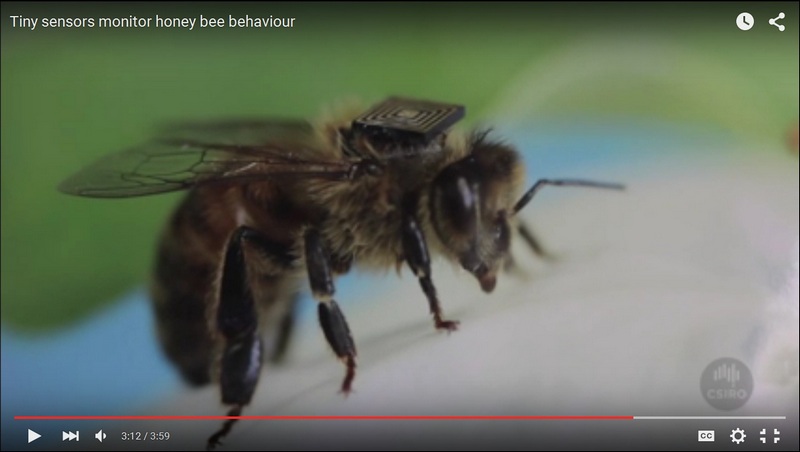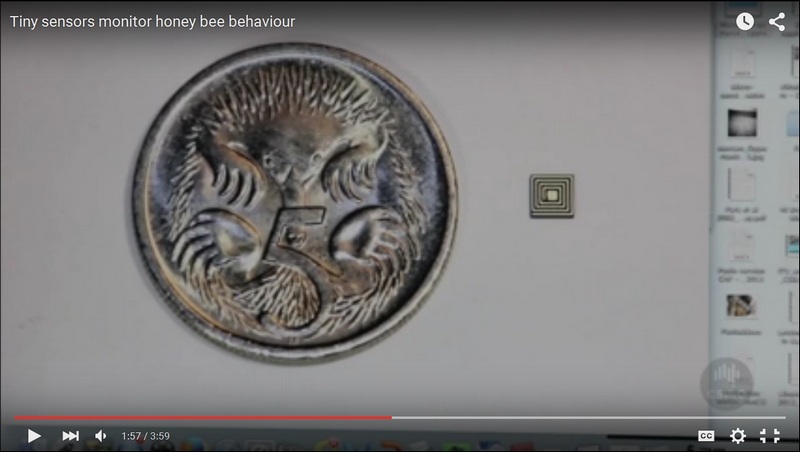Know Why and How Scientists Are Making Honeybees Wear ‘Backpacks’
Bees are an important part of the ecosystem being one of the major agents of pollination. Their numbers, however, have continuously declined over the years. Bees have been dying at an alarming rate and scientists find it difficult to figure what’s really causing these mass deaths. There are many factors being eyed, including pollution and the rapid urbanization of rural areas, but the real cause cannot be accurately identified so it’s difficult to devise and implement a solution.
This is why a group of scientists have decided to give some of their bees their tiny backpacks. These backpacks are mainly sensors designed to track the hymenopters’ activities to find out what is really causing the fatalities in their ranks.
Backpack for Bees
A group of scientists from different parts of the world, along with farmers, beekeepers, and tech companies have collaborated in a project aimed at exploring the mystery behind the diminishing population of bees. Their solution: minute sensors attached to the backs of around 10,000 healthy honeybees.
These minute sensors were developed by Australia’s Commonwealth Scientific and Industrial Research Organization (CSIRO) in Tasmania. After more than two years of development, the little sensors are now ready for deployment. These sensors are only around 5.4 miligrams in weight and .25 cm wide but they already have their own power generation systems – a special battery that is able to replenish its energy store through vibration. The sensors make use of radio frequency identification technology (RFID) to record information.
The sensor “backpacks” are attached to the bees, on their thoraces, using a special adhesive.
In an interview with BBC, CSIRO Science Leader Professor Paulo de Souza expressed concern over the plummeting populations of bees worldwide as crops that need pollination are gravely affected. Professor de Souza noted that in some parts of the world, a healthy hive of bees can be compared to a properly functioning clockwork one day, and then all of these bees are dead the next day without experts knowing the real reason for their deaths. This is what is being called the “colony collapse disorder.” Professor de Souza laments that a single scientist’s effort will never be enough to properly inquire into the realities behind this syndrome. That’s why it’s definitely a good thing that scientists from around the world are now collaborating to finally shed light on the mass bee deaths mystery.
Information Recorded by the “Backpacks”
These sensors keep a record of the bees’ activities while they are away from the hive. Information being recorded include those related to the bees’ diet, the weather, and their exposure to pesticides, air pollution, and contaminants in water.
According to Professor de Souza, bees are typically predictable. That’s why if their behavior suddenly becomes random or less than what’s expected, it is highly likely that they are encountering stress or changes in their environments.
Making bees wear their backpack sensors is likely going to reduce the amount of pollen they are able to carry but the scientists behind the project are hoping that they can still obtain meaningful amounts of data. The project is deemed as a better tracking option compared to observing them through other means. This miniature technology aims to better understand the movement of bees and their abilities to pollinate when exposed to various factors.
Importance and Scope of the Study
The population of honeybees that will be selected for the study will come from different areas worldwide but a large concentration of the study is in Australia. The first bees being studied are the Tasmanian honey bees. Agriculture and horticulture in Australia is majorly dependent on feral and unmanaged honeybees for pollination. Over the years, a significant decline in the honeybee population has been observed. While it is possible to use managed bee pollination services to take the place of the dwindling feral bees, it is very unlikely for these services to adequately provide a substitute to unmanaged honeybees.
In the United States, beekeepers report of having lost around 42.1% of their colonies in the period between April 2014 to April 2015. This is according to the Bee Informed Partnership, an association of research laboratories and universities engaged in honeybee research. United States Government and UN statistics, on the other hand, present a dire situation of 6 million commercially managed colonies in the US in 1947 to just a little over 2.6 million in 2013.
One of the thrusts of the study is to explore the role of the predatory mite called Varroa destructor. These mites have been killing off bee colonies over the past decade but scientists are not sure if they are really the most significant reason for the staggering reduction in bee population, especially since there is a prevailing belief that some honeybees (in Australia in particular) are immune to these mites.
Results
The study is still ongoing and will last until next year. The full research findings will be shared with others in the global scientific community. For now, more scientists from different parts of the world are expressing interest in the study so this endeavor may grow into something bigger and yield more meaningful data or results. It’s a good thing that CSIRO has decided to share its bee-tracking technology as well as its research protocols.


